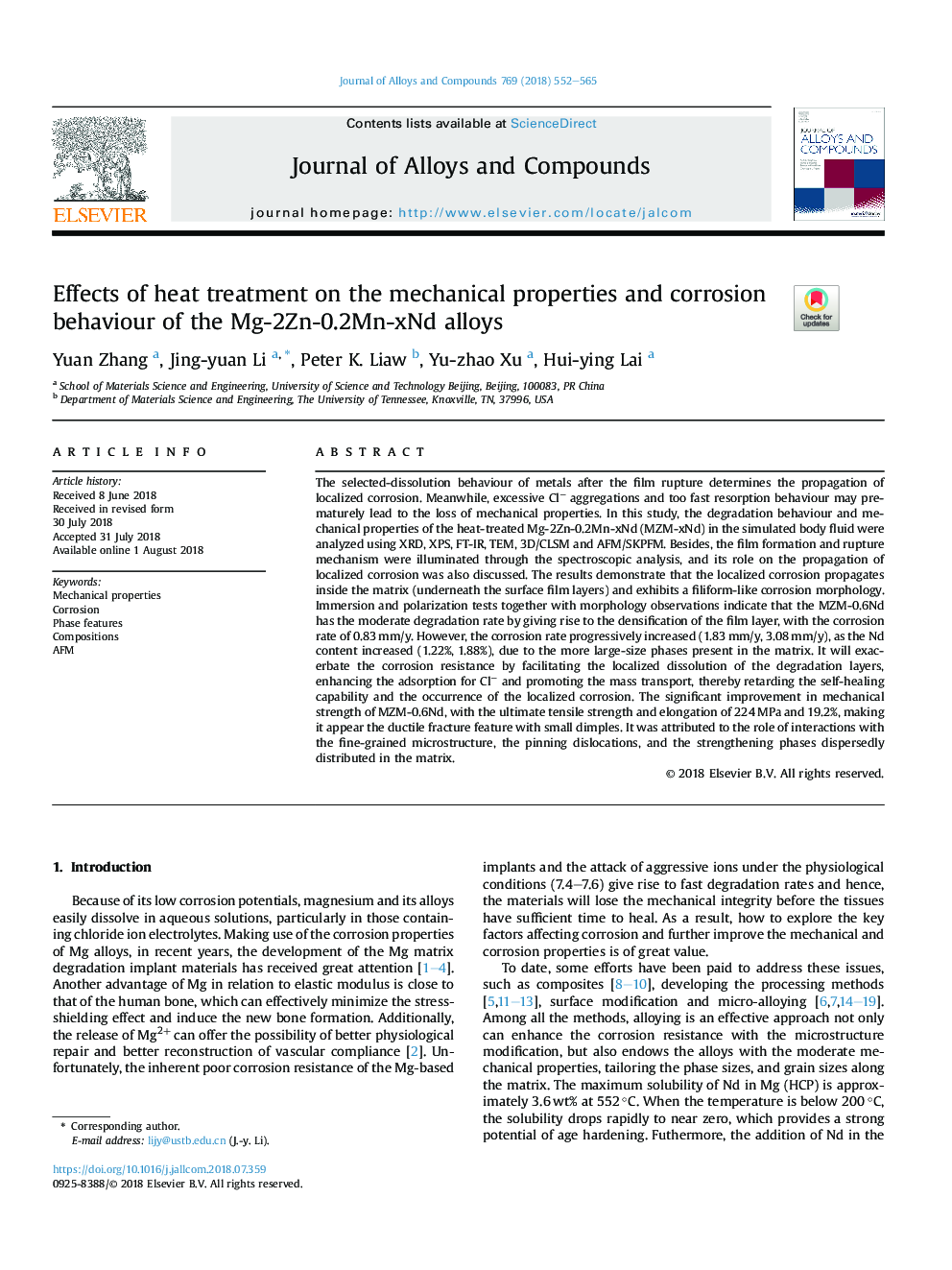| کد مقاله | کد نشریه | سال انتشار | مقاله انگلیسی | نسخه تمام متن |
|---|---|---|---|---|
| 7990048 | 1516125 | 2018 | 14 صفحه PDF | دانلود رایگان |
عنوان انگلیسی مقاله ISI
Effects of heat treatment on the mechanical properties and corrosion behaviour of the Mg-2Zn-0.2Mn-xNd alloys
دانلود مقاله + سفارش ترجمه
دانلود مقاله ISI انگلیسی
رایگان برای ایرانیان
موضوعات مرتبط
مهندسی و علوم پایه
مهندسی مواد
فلزات و آلیاژها
پیش نمایش صفحه اول مقاله

چکیده انگلیسی
The selected-dissolution behaviour of metals after the film rupture determines the propagation of localized corrosion. Meanwhile, excessive Clâ aggregations and too fast resorption behaviour may prematurely lead to the loss of mechanical properties. In this study, the degradation behaviour and mechanical properties of the heat-treated Mg-2Zn-0.2Mn-xNd (MZM-xNd) in the simulated body fluid were analyzed using XRD, XPS, FT-IR, TEM, 3D/CLSM and AFM/SKPFM. Besides, the film formation and rupture mechanism were illuminated through the spectroscopic analysis, and its role on the propagation of localized corrosion was also discussed. The results demonstrate that the localized corrosion propagates inside the matrix (underneath the surface film layers) and exhibits a filiform-like corrosion morphology. Immersion and polarization tests together with morphology observations indicate that the MZM-0.6Nd has the moderate degradation rate by giving rise to the densification of the film layer, with the corrosion rate of 0.83â¯mm/y. However, the corrosion rate progressively increased (1.83â¯mm/y, 3.08â¯mm/y), as the Nd content increased (1.22%, 1.88%), due to the more large-size phases present in the matrix. It will exacerbate the corrosion resistance by facilitating the localized dissolution of the degradation layers, enhancing the adsorption for Clâ and promoting the mass transport, thereby retarding the self-healing capability and the occurrence of the localized corrosion. The significant improvement in mechanical strength of MZM-0.6Nd, with the ultimate tensile strength and elongation of 224â¯MPa and 19.2%, making it appear the ductile fracture feature with small dimples. It was attributed to the role of interactions with the fine-grained microstructure, the pinning dislocations, and the strengthening phases dispersedly distributed in the matrix.
ناشر
Database: Elsevier - ScienceDirect (ساینس دایرکت)
Journal: Journal of Alloys and Compounds - Volume 769, 15 November 2018, Pages 552-565
Journal: Journal of Alloys and Compounds - Volume 769, 15 November 2018, Pages 552-565
نویسندگان
Yuan Zhang, Jing-yuan Li, Peter K. Liaw, Yu-zhao Xu, Hui-ying Lai,